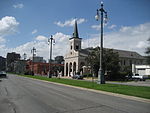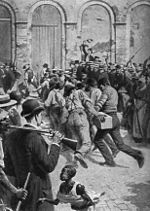Tremé

Tremé ( trə-MAY) is a neighborhood in New Orleans, Louisiana. "Tremé" is often rendered as Treme, and the neighborhood is sometimes called by its more formal French name, Faubourg Tremé; it is listed in the New Orleans City Planning Districts as Tremé / Lafitte when including the Lafitte Projects. Founded in the 1810s, it is one of the oldest neighborhoods in the city, and was initially the main neighborhood of its free people of color. Historically a racially mixed neighborhood, it remains an important center of the city's African-American and Créole culture, especially the modern brass band tradition. Some sources go so far as to call it the oldest Black neighborhood in the nation. "Faubourg Tremé" was created from land owned by Claude Tremé in 1810. A subdistrict of the Mid-City District Area, its boundaries as defined by the New Orleans City Planning Commission are Esplanade Avenue to the east, North Rampart Street to the south, St. Louis Street to the west and North Broad Street to the north.
Excerpt from the Wikipedia article Tremé (License: CC BY-SA 3.0, Authors, Images).Tremé
North Prieur Street, New Orleans Storyville
Geographical coordinates (GPS) Address Nearby Places Show on map
Geographical coordinates (GPS)
| Latitude | Longitude |
|---|---|
| N 29.968333333333 ° | E -90.073888888889 ° |
Address
North Prieur Street 1007
70116 New Orleans, Storyville
Louisiana, United States
Open on Google Maps







